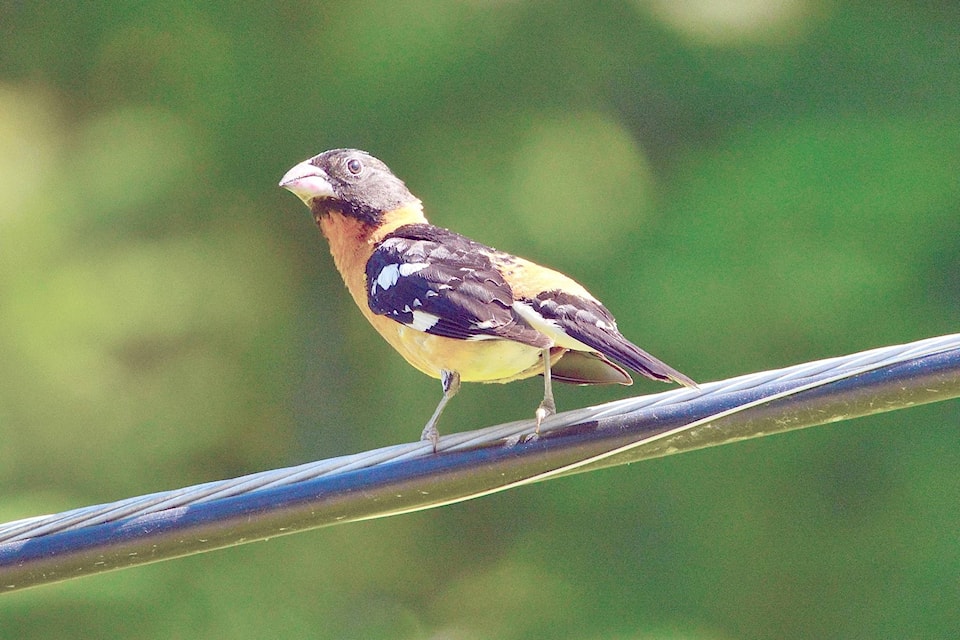From time to time I get phone calls about a black and orange bird that someone has seen.
Three candidates immediately pop to mind: American Redstart, Black-headed Grosbeak and Bullock’s Oriole. If the observer reports that the bird was small, say ‘chickadee-size’, then American Redstart is the only option. Redstarts are members of the warbler family and measure only about 12 cm in total length.
If, on the other hand, the observers reports it as ‘blackbird-size’, then either of the other two are possible. Although both the oriole and the grosbeak are black and orange, their appearance is quite different. When you first see an oriole, you will definitely see it as a bright orange bird.
A closer look will reveal the black and white wings. The orange colour on a Black-headed Grosbeak is not as bright and may not even be noticed at first glance.
But after a closer look, it is also orange with black and white wings. Orioles are members of the blackbird family and therefore, have longish pointed beaks.
In contrast, grosbeaks are more closely related to the finches and have shorter, heavier bills. Neither species is common in our region; in fact, the oriole is not reported every year.
Just a little further south, however, they occur quite regularly. I usually see them on any visit to the Slocan River Valley, the Castlegar area or around Creston.
Black-headed Grosbeaks, while not common, do occur annually in our area. But despite their colourful appearance, they are easy to miss.
They frequent deciduous trees and can disappear easily into the dense foliage at this time of year. We are often alerted to a bird’s presence by its song, but the grosbeaks song is so similar to that of our robin, that it also often goes unnoticed. Both species are migratory and therefore are only seen here during the spring and summer breeding season. Their primary wintering areas are in Mexico.
They are western birds in Canada, occurring primarily west of the Rocky Mountains. Despite all the similarities between the two species, their nest-building techniques are completely different.
The Black-headed Grosbeak builds a fairly typical cup-shaped nest in a tree or shrub, usually within 3-4m of the ground.
The Bullock’s Oriole builds a much larger, hanging nest, suspended from a branch, perhaps as high as 10m above the ground.
The attached picture of a Male Black-headed Grosbeak was taken last week near Trout Lake.
